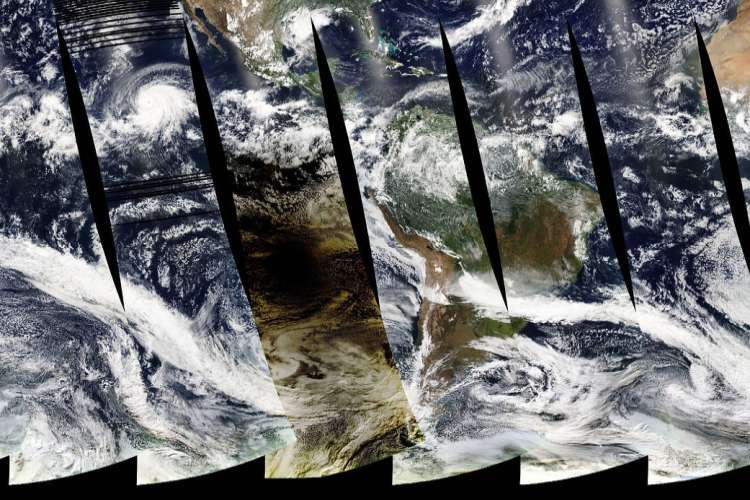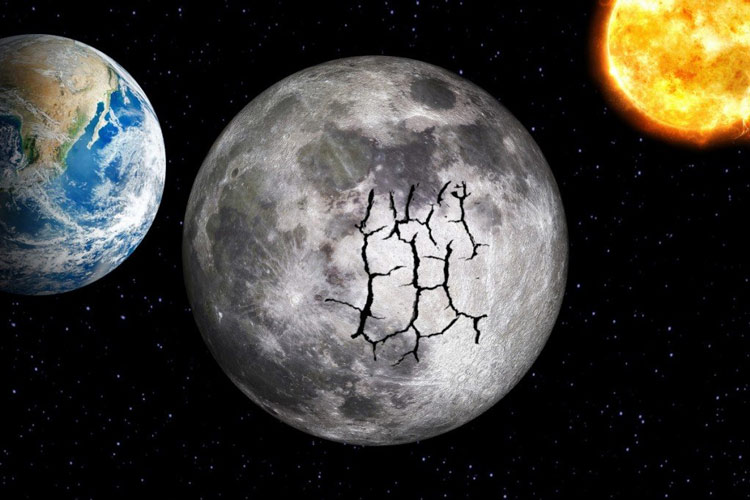On July 2, 2019, a black circle appeared in the sky at 4:38 p.m. local time that darkened the entire beach city of La Serena, Chile. The rest of the sky was covered in orange twilight. It was a total solar eclipse during which the Moon passed directly between the Earth and the Sun. Thus, it completely obscured the disk
Due to the solar eclipse, the temperature near the ground dropped by a few degrees for a while. As the solar eclipse appeared, the NASA satellites started capturing the whole view. The Moderate Resolution Imaging Spectroradiometer (MODIS) sensor on the Aqua satellite captured the Moon’s shadow as it traveled in the eastward direction across the South Pacific. The shadow cast by the eclipse consisted of the completely darkened umbra and the partially shadowed penumbra.
The Aqua satellite has a polar orbit and the MODIS sensor collects imagery in swaths. These swaths are roughly 2,330 kilometers wide. The image of the moon shadow captured by MODIS is a mosaic comprised of data collected at three different times.
One-third of the image from the left was captured at 09:40 pm Universal Time after the shadow had passed. The middle swath was captured at about 10:00 pm Universal Time when the eclipse was in progress over the South Pacific. The right-most swath showed Chile between 6:13 pm to 6:32 pm Universal Time, before the shadow passed.
The black gaps in the image are the widest point of the Earth near the Equator where MODIS swaths did not meet on a given day.
Now the question arises, how is the Moon able to obscure the Sun, though it is 400 times smaller in diameter than the Sun? Actually, it’s all about the Moon’s orbit.
The Moon travels around the Earth in a slightly elliptical path. It’s like a squashed circle with the Earth at its center. So, the Moon is not always at the same distance from the Earth. When it is closest to the planet, the Moon appears slightly larger compared to when it is far away.
During a total solar eclipse, the Moon is about 400 times closer to the Earth than the Sun is to Earth. This offset the 400 times difference in diameter.
Summary:
It’s a rare sight to see a total solar eclipse from a particular location. On average, a solar eclipse occurs for a few minutes at the exact same spot on Earth about every 375 years. Although a total solar eclipse happens after one and a half year somewhere on Earth. According to NASA, the next total solar eclipse will occur over the South Pacific, Argentina, the South Atlantic and Chile on December 14, 2020. In North America, the next total solar eclipse could be observed on April 8, 2024.
















